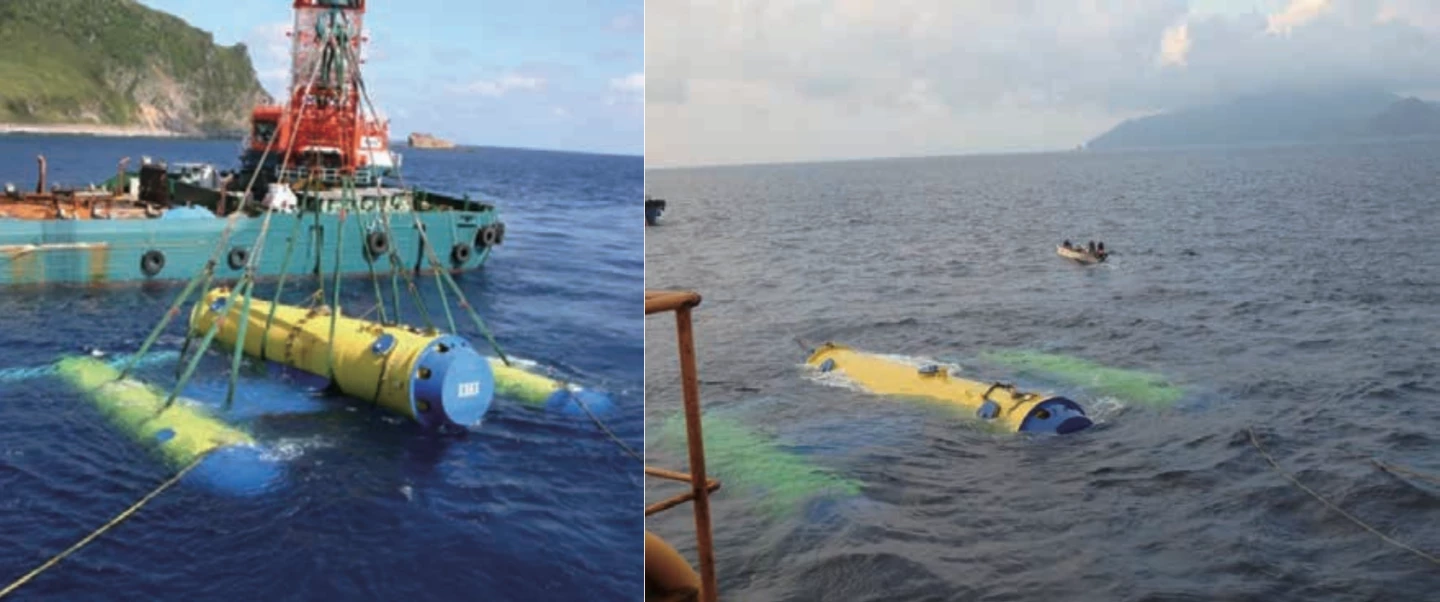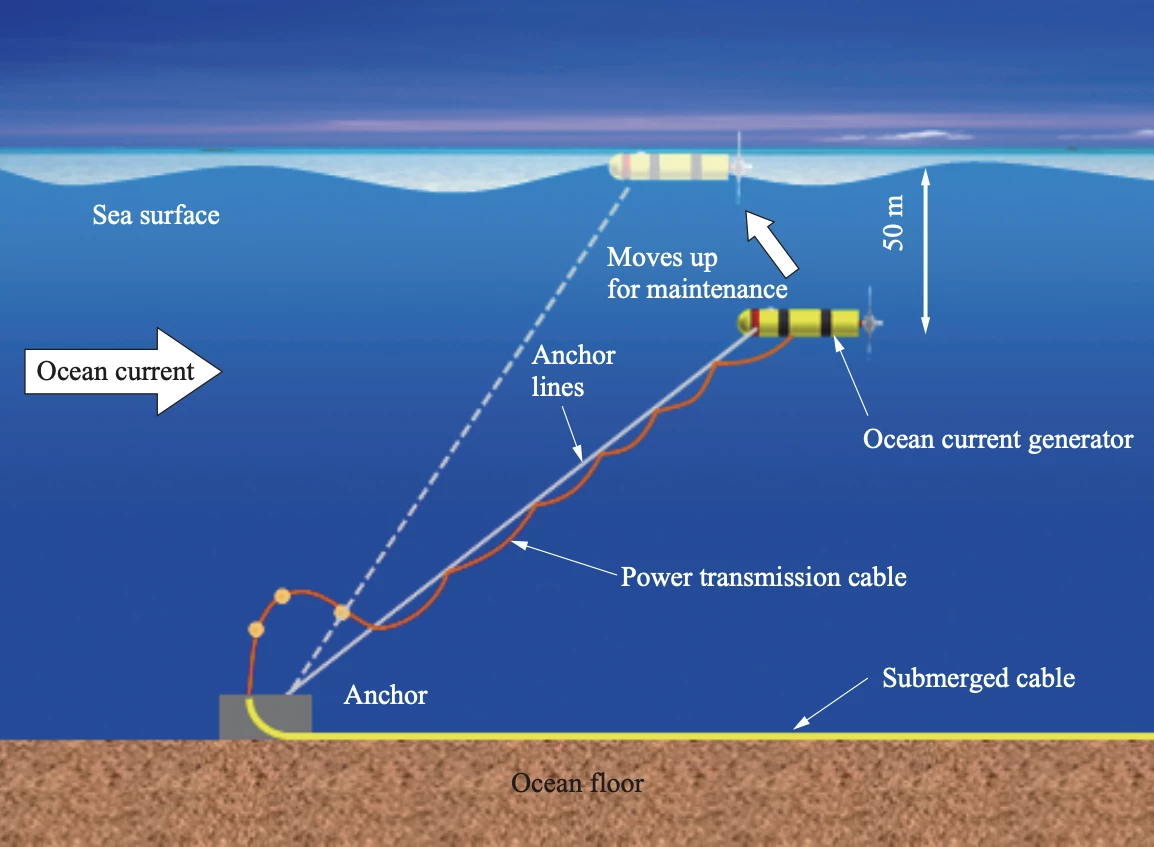Renewable energy potential is not distributed evenly. Japan, for example, has sub-par solar potential and nowhere near the wind potential of Western Europe or the United States. It's also currently ranked fifth in the world for electricity consumption, and adding nuclear power will be politically difficult in the wake of Fukushima, meaning that its race to zero emissions will require more innovation than most if it wishes to maintain energy independence.
One thing Japan does have is lots of coastline and control over the world's sixth-largest territorial waters, making ocean-based alternative energy ideas particularly attractive.
Tidal flow generators – like the 2-MW Orbital O2 currently exporting power to the grid off Scotland's Orkney islands – might offer reliable base load generation, but Japan sees so much shipping traffic through areas with suitable tidal potential that the idea's unlikely to work.
So instead, Japanese company IHI and the New Energy and Industrial Technology Development Organisation (NEDO) have been experimenting with another reliable source of energy that could potentially deliver exceptionally reliable energy if tapped: ocean currents.

Ocean currents typically offer a slower harnessable flow than well-chosen tidal flow locations. The O2, for example, can deliver its rated power output with water speeds between 2.5-4.5 m/sec. The Kuroshio ocean current, on the other hand, flows at more like 1-2 m/sec. But it's enormous, up to 100 km (62 miles) across in some places, and it's estimated to move a staggering 65 million cubic meters of water per second at its strongest point, just off the South-East coast of Japan.
So there's potential there to hook up vast arrays of ocean current turbines, sharing transmission lines, and siphon off a portion of an energy source IHI estimates at around 205 gigawatts. IHI and NEDO have been working on this opportunity since 2011, and since 2017, the companies have had a small-scale 100-kilowatt tidal generator in testing.

This demo generator, called Kairyu, is anchored to the ocean floor much like the Orbital O2. But where the O2 harnesses the flow just a couple of meters under the surface, and switches directions with the tides, Kairyu is kept steady at around 50 m (164 ft) under the waves. That's not the most efficient place to harvest ocean current energy – closer to the surface would be better, says IHI, but the area experiences typhoon conditions that can result in waves more than 20 m (65 ft) high, so keeping them deeper underwater is primarily a safety consideration.
Each of Kairyu's three cylindrical floats is around 20 m (66 ft) long, and the whole thing is about that wide as well. The outer two floats sport variable-pitch twin-blade turbine rotors with a diameter of 11 m (36 ft), set to counter-rotate to balance out torque forces. Each of these rotors spins a 50-kW generator.
Water pressure sensors keep the machine appraised of its depth, and it's able to autonomously manage its position with a buoyancy adjustment system. Likewise, current speed sensors inform Kairyu's decisions on blade pitch, which is managed for maximum efficiency, and other position sensors allow it to control its pitch, yaw and roll angles using attitude control devices on the rear ends of the floats. Where maintenance is required, Kairyu simply raises its buoyancy and floats to the surface, and can be worked on there – so it doesn't need articulating arms like the Orbital O2.

With Kairyu successfully tested over a period of some 3.5 years, IHI says it hopes to scale this thing up to 2 MW, with blades some 40 m (132 ft) long, for a full-scale production version that could be deployed in serious numbers. The target launch is 2030, and according to Bloomberg, IHI expects ocean current energy prices to be close to competitive with Japanese solar energy prices. Indeed, it could be a strong solution, says the company, as a low-cost energy source for remote islands as it ramps up.
The key is, and always will be, money. If this thing works economically at scale, it could provide an exceptionally reliable green energy source that could make a huge contribution to Japan's decarbonization efforts. Where solar in Japan operates at a typical capacity factor of 15 percent – that is, over the course of a year, it tends to generate about 15 percent as much energy as it would if the conditions were always perfect – and onshore wind operates at a capacity factor around 29 percent, ocean current energy operates at a 70 percent capacity factor, which is nearly up there with coal-fired power plants at 80 percent.
What's more, climate change research predicts that as the planet warms up, the Kuroshio current will become stronger, potentially improving yield from these devices over the coming decades.
Either way, the potential is enormous, and this project represents yet another ingenious way humans are trying to extract power from nature with the minimum possible adverse consequences.
Source: IHI







